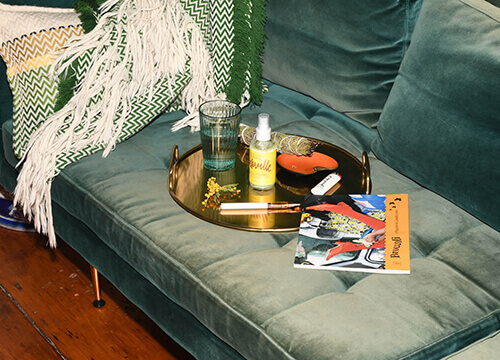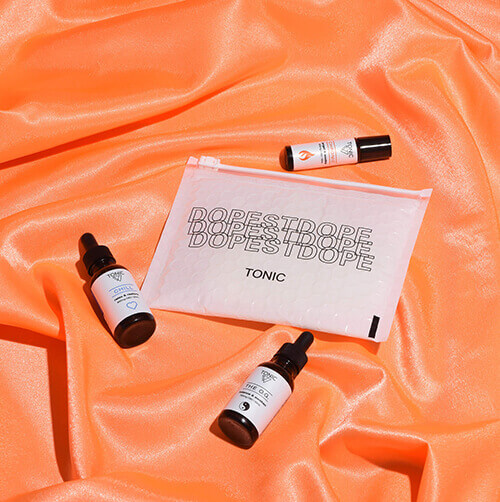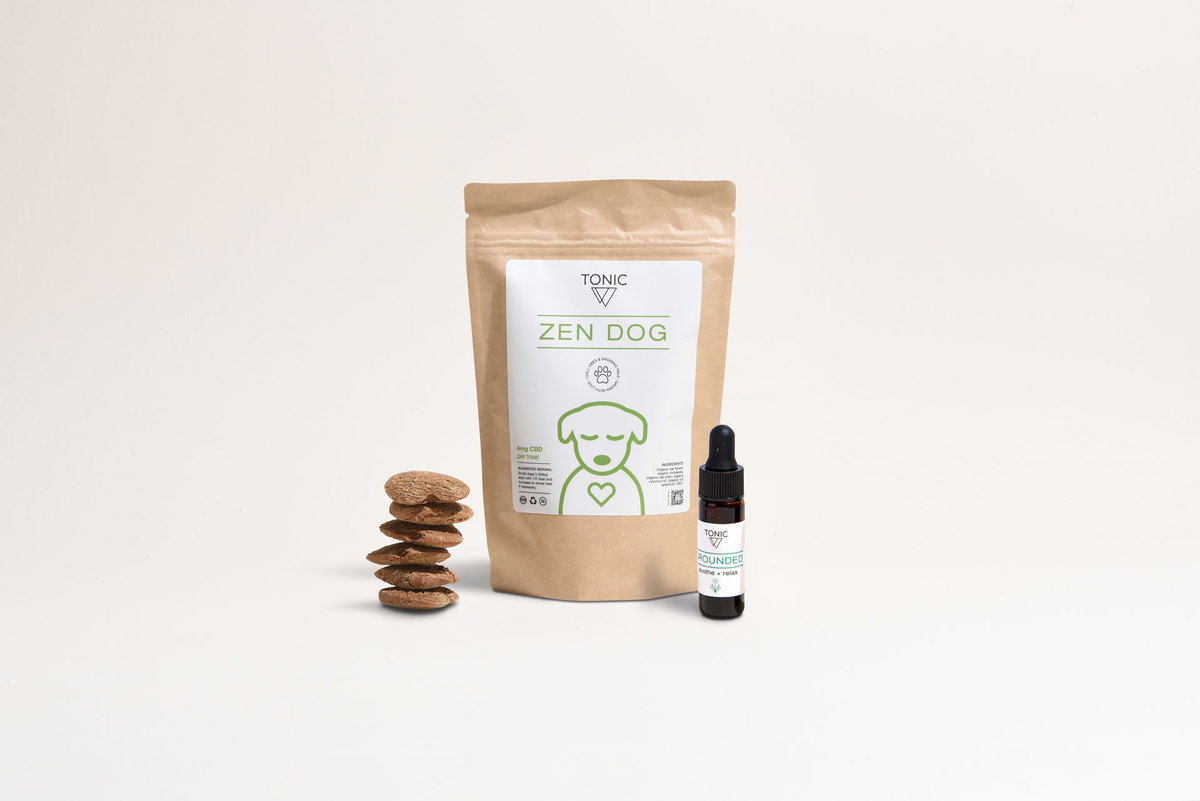Is CBD Cream Regulated?
We’ve partnered with Its Nice Paper to give you a monthly deep dive on the latest industry happenings with CBD and cannabis from a regulatory standpoint. Keep reading to learn about this month’s topic, topicals.
CBD Cream 😬
In our last industry newsletter, we covered the FDA sending warning letters to CBD companies faster than you texting your ex after a night filled with tequila. One area we didn’t cover was CBD topicals. Topicals include creams, serums, and sprays that go on your body, not into your mouth.
What does the FDA have to do with this?
The FDA defines topicals in two categories; drugs and cosmetics. Cosmetics are “articles intended to be rubbed, poured, sprinkled, or sprayed on, introduced into, or otherwise applied to the human body…for cleansing, beautifying, promoting attractiveness, or altering the appearance” according to the FDA website. When it comes to creams and serums intended to make you pretty, you don’t need any approval. You can launch a cream with any claim you deem fit as long as it doesn’t veer into drug status. Drug status would include changing the function of your skin. Any product that claims to remove wrinkles or increase the skin’s production of collagen, acne or pain is a drug or a medical device in theory.
Claim Status and the FDA – What does it all mean?
This “claim status” ambiguity coupled with the FDA’s lack of resources to enforce rules, let alone against the CBD industry, is why so many creams, serums, and sprays fly under the regulatory radar. Walk up to any cosmetics counter and ask a sales associate for their CBD cream’s batch-level certificate of analysis (CoA) showing potency and safety testing. Chances are you won’t get one. Why? Consumers aren’t demanding it the same way they are with tinctures. States aren’t requiring it (New York requires batch level CoAs with the new hemp bill). Furthermore, cosmetics aren’t regulated. You’re mixing an ingredient that hasn’t been federally clarified into an already ambiguous industry. Result; the wild west with wild claims.
So, how does one navigate an already confusing regulatory world? What’s up with Sephora’s latest “rules” on CBD? Here’s a handy guide for both consumers and those looking to make topicals.
What claims can you make?
For now, cosmetics are carte blanche. As long as you stick to the guidelines of “articles intended to be rubbed, poured, sprinkled, or sprayed on, introduced into, or otherwise applied to the human body…for cleansing, beautifying, promoting attractiveness, or altering the appearance” according to the FDA.
Anything that falls outside of that, including pain claims, is no longer in the cosmetic department. Technically it’s in the drug department. This even includes essential oils and aromatherapy. On the FDA website they include pain rubs as over-the-counter medication stating that if a product “is intended for therapeutic use, such as relieving muscle pain, it’s a drug.”
How does the process work?
To be able to make pain claims, you either need to go through a new drug approval process or, what most brands do, they use an approved drug ingredient to make claims on the whole formula. This is why you will see camphor in so many CBD creams. Camphor is an FDA-approved topical analgesic and anesthetic used to relieve pain, as such, at a certain active percent, brands can make pain claims. It’s considered an active ingredient, but only at particular doses. While the research behind CBD as an anti-inflammatory is extremely promising, and the overwhelming anecdotal evidence can’t be ignored, you technically can’t make any pain claims on a CBD product. Why? It’s not a recognized OTC or active ingredient, no dosing, or active % has been established. You need camphor, menthol or another ingredient to make a claim to help pain relief.
For those looking for a good pain cream or topical; a good rule of thumb is over 250mg per oz. With your skin, bioavailability, or how much CBD is absorbed, it is not fully understood. If the dose is very low, you’re probably not getting enough to your receptors. If there are camphor and arnica you’ll experience an even stronger effect (the entourage effect doesn’t just apply to cannabinoids). Read all of the ingredients. Take any claim with a grain of salt. And if a brand is claiming minor cannabinoids as an active ingredient, ensure there is more than 5mg of it. And finally if you’re seeing low dosing and a ton of camphor, menthol or juniper… it’s safe to assume your pain relief isn’t coming from the CBD.
Is your product white-labeled?
White-labeling is when a factory makes pre-made mixtures and then sells that goop to anyone who wants to buy it. You could buy it and brand it, and I can buy it and brand it. The only difference is the packaging. There is nothing wrong with this process, good products can be white-labeled. But, when you’re just changing the packaging on something, the end product shouldn’t be very expensive.
How can you tell if a product is white-labeled? With any product, it’s challenging, particularly CBD due to how easy and cost-effective it is to launch. A couple of telltale signs is the brand launched quickly (it takes months to stabilize and test custom formulations), the ingredients don’t seem very differentiated or custom and you can’t tell where the brand sourced their ingredients. If you’re a brand using white-labeled creams and topicals make sure you get the appropriate testing and certificates of analysis to share with consumers.
What should you ask when it comes to white-labeling?
- Sourcing on all ingredients; yes you know where your hemp is coming from, but what about the other ingredients? Do your due diligence.
- Manufacturing process; are you dealing with the manufacturer that’s making your products or a broker? Make sure you get a factory tour with who you’re making your products with.
- More due diligence before going into a white labeling partnership’
- How long has the stock been sitting on the shelves? Ask for shelf life testing and the date of production runs on your product.
- How is it stored? CBD is sensitive to oxygen, light, and heat, make sure it’s been stored in a cool, dry and dark place.
- Full panel and batch testing; this is the CoA on the exact product you’re getting.
- Is the factory ISO certified, FDA licensed, OTC certified and practicing cGMP? Also important to be FTC certified and EPA licensed.
If you’re a consumer, make sure to ask brands for their CoAs. Why? If they don’t have it, and their white labeling manufacturer doesn’t have it, there’s a good chance your product doesn’t have CBD. CBD allows for a markup so make sure you’re getting what you’re paying for.
Does full spectrum matter?
Yes and no. Full-spectrum is when a brand claims the whole hemp plant is used in its extraction process. The way it’s marketed and explained, full-spectrum contains a host of cannabinoids ranging from CBD to CBG, CBN, under .3% THC and other compounds. This is in theory. In practice, it’s very different.
We did an analysis of a few brands being sold in well-known luxury cosmetic stores and with the outdated certificate of analysis, we found they had 99.99% CBD and .01% THC. What does this mean? Brands can market themselves as full-spectrum, but not actually be full spectrum. When you have almost 100% CBD, that’s an isolate.
Who makes the rules here?
As there is no regulatory body creating rules or definitions around full- spectrum, brands can take what is essentially an isolate and call themselves full spectrum. Industrial hemp which is the majority of what you see on the market is almost 100% CBD, brands can take this cheap hemp and re-sell to you at a premium claiming better efficacy. In truth? Ask for the receipts. If the CoA is hard to find, don’t buy till you get it. For brands that are actually using full spectrum in creams, highlight your certificate of analysis, consumers like it when you brag about transparency.
What dose should I use?
There is very little research on what dose to use. While clinical trials are expensive you should do consumer testing. In terms of what’s out there for pain relief we’ve seen anywhere from 250mg/oz recommended to 500mg/oz but it really depends on the formula. For example, alcohol will help ingredients penetrate the skin as it breaks your skin barrier allowing for the cannabinoids to get in there.
The easiest way to navigate a potential product is the price. If the product is over $100 it better have a very high dose. If it’s $20 don’t expect much, especially if the brand is not transparent about their CoA.
What’s up with Sephora?
Sephora recently announced “rules” by which CBD beauty brands must abide by. The first includes that brands must be made with full-or-broad-spectrum CBD, not isolate. Second, the CBD has to be tested a minimum of three times and, third, a certificate of analysis (COA) validating the CBD content matches label claims must be available upon request. If a brand claims a product has 1,000 milligrams of CBD per bottle, its COA should confirm that amount. The fourth rule is that CBD products must meet Sephora’s Clean Beauty Standards.
While certificates of analysis are a must and the clean beauty standards are pretty easy to abide by (one ingredient is “lead” which is not exactly a hot ticket item in skincare) what’s interesting is the ban on isolates. While it’s generally agreed upon that CBD is less effective than CBD plus other cannabinoids (much like Vitamin C is much more effective with Vitamin E), it’s unclear how Sephora will define “full-spectrum” or broad-spectrum. As more minor cannabinoid isolates emerge in addition to CBD derived from other plants (such as in Japan where they use oranges). Perhaps it has something to do with the FDA, we just don’t know.
Are isolates bad for me?
Where do we even begin? The Sephora “rules” are a bit murky. No isolates can be sold in-store but in analyzing three brands they carry, one had 100% CBD with a few terpenes (essential oils). Not exactly full-spectrum. Others had under .05% concentration of minor cannabinoids with a few terpenes, again, that’s veering towards isolate.
To clear up any misconceptions on the safety of isolates (particularly when it comes to your face where you want extremely precise, replicable ingredients), here’s what Larson Dick – Chief Science Officer for Bardo, TONIC’s new extraction and research facility – has to say on each distillation process. Like with all things, it’s more nuanced and each has its pros and cons.
What is “distillate?”
The full-spectrum distillate, broad-spectrum distillate, and isolates are terms used to refer to the diversity of cannabinoids found in highly refined hemp extracts. Refined extracts, commonly referred to as distillates by way of their manufacturing process, are meticulously designed by organic chemists to have varying diversities of cannabinoids in high concentrations relative to their lipid constituents.
Full-Spectrum:
Full-spectrum distillate contains the entire range of cannabinoids originally present on the source biomass purified to the highest levels possible. These distillates are prepared with wideband distillation techniques and refined through delicate molecular separation to yield high purity cannabinoids with no loss of diversity from the biomass. Editor’s note; it’s important to emphasize here that the quality of full-spectrum fully depends on the strain and farming practices. As noted, many strains of hemp are 100% CBD with such low traces of minor cannabinoids, they don’t show up on testing. Ask for a CoA and if you do not see percentages of other minor cannabinoids or very small percentages, be wary.
Broad-spectrum:
Broad-spectrum distillate contains a wide but specifically selected range of cannabinoids prepared by molecular distillation plate coalescence of the targeted cannabinoids. These techniques are used to prepare individually crafted formulations that maximize their effectiveness for targeted purposes. Multiple versions of broad-spectrum distillate exist for different medicinal and recreational applications.
Isolates:
Isolates refer to completely pure compounds produced through additional crystallization processes that render pure compounds separate from each other. While isolates have allopathic value as an interface for biopharmaceutical development, they lack the capacity for synergistic cannabinoid interactions as single compounds.
Each aspect of full-spectrum and cannabinoid specific refinement has a unique production process based on the physical and chemical properties of the targeted molecule or range of molecules. While no version of semi-pure to pure cannabinoid formulations are theoretically harmful if perfectly purified, in production practice isolates do carry additional burdens in terms of solvent contamination and heavy metal retention. These burdens can be alleviated with the correct expertise but do require professional consideration.
Bottom line
Currently, ingestible CBD is under more scrutiny than topicals. While a few topical companies have received warning letters from the FDA, tinctures, gummies, and food tends to get more attention for a myriad of reasons. For topicals, if you’re making them, try to be more transparent to gain consumer trust and always vet your manufacturing and supply chain. If you’re concerned about potential FDA regulation, stay away from pure isolates, TBD on what the FDA will regulate there but it’s unlikely for an outright ban (for an ingestible this is possible due to Epidiolex). For consumers, be wary of exorbitantly expensive products and anything in a clear package as CBD degrades under UV exposure. Always ask for receipts.


 The Steady Supply
The Steady Supply

 Personalized Vibes
Personalized Vibes
